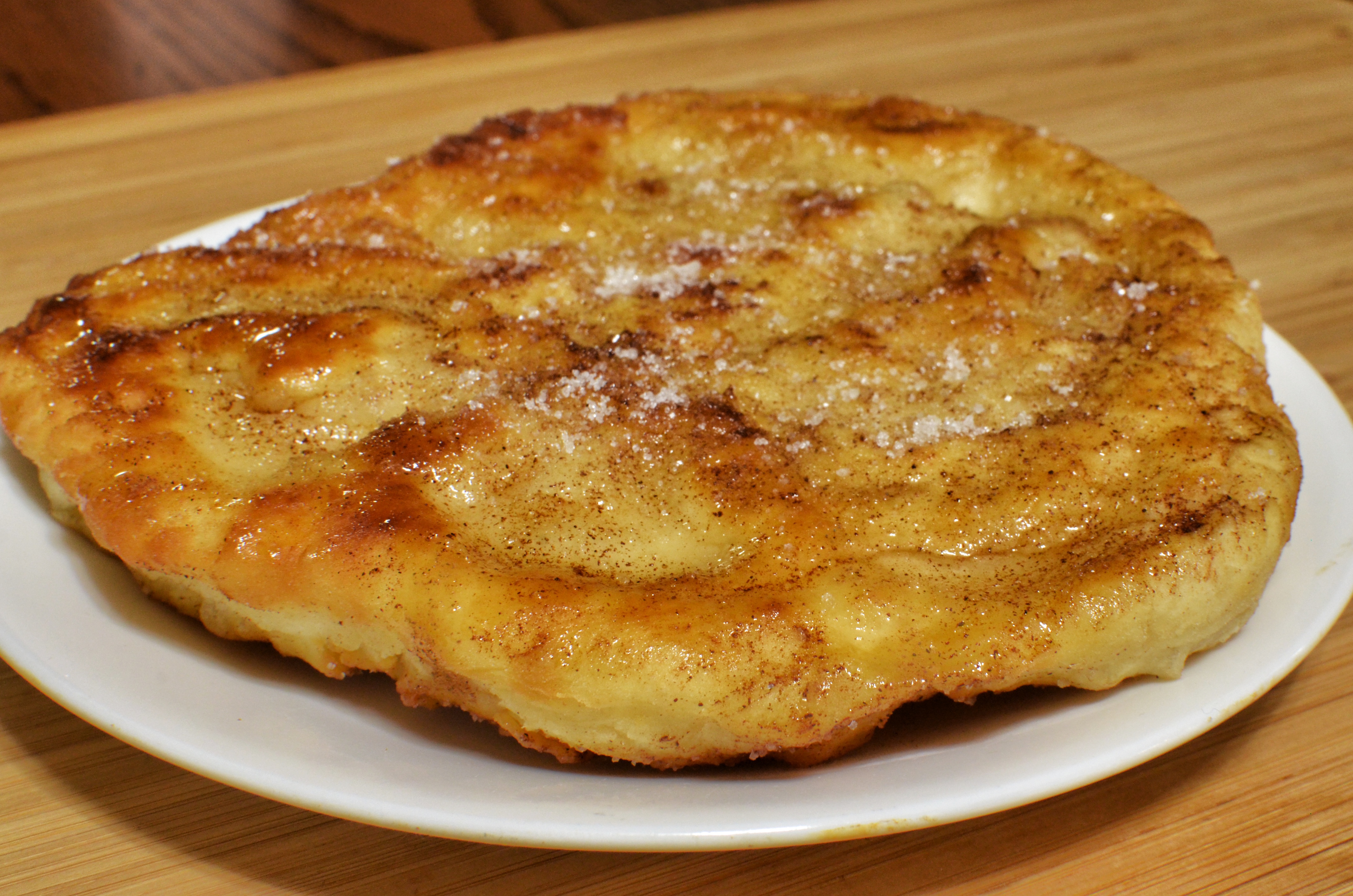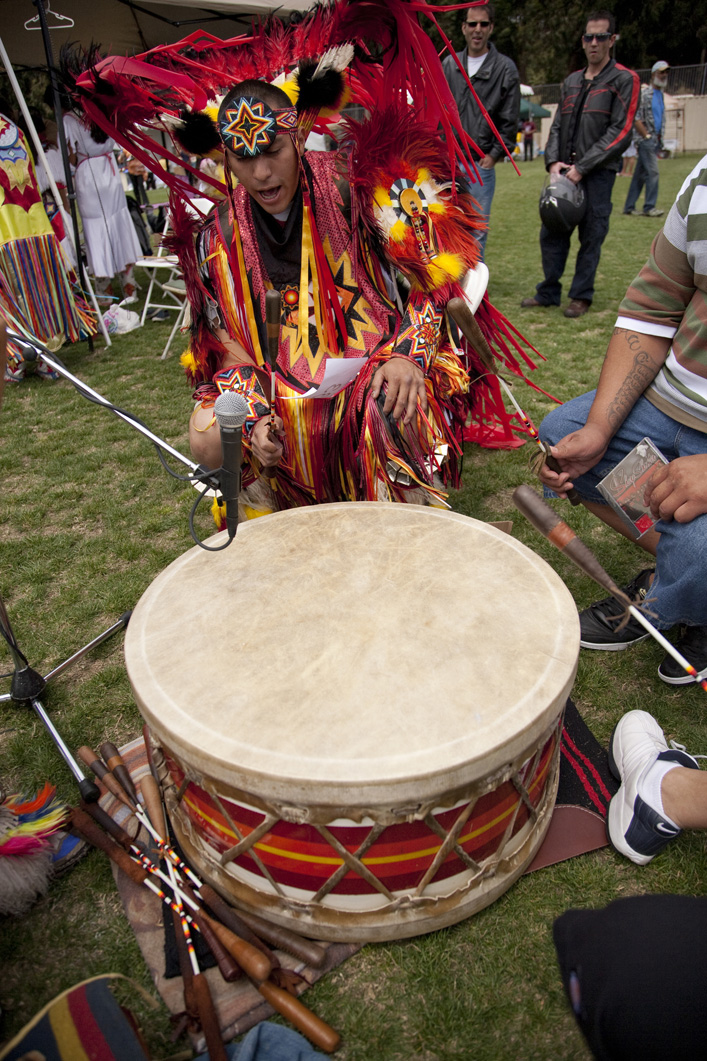Powwows are celebrations that showcase Indigenous music, dance, regalia, food and crafts. Commonly hosted by First Nations communities (either on reserve or in urban settings), powwows are often open to non-Indigenous people, Métis peoples and Inuit. Contemporary powwows originated on the Great Plains during the late 19th century. Since the 1950s, they have been growing in size, number and popularity. Powwows serve an important role in many Indigenous peoples’ lives as a forum to visit family and friends, and to celebrate their cultural heritage. Powwows also serve as a site for cross-cultural sharing with other attendees and participants. Indeed, powwows provide the opportunity for visitors to learn about, and increase their awareness of, traditional and contemporary Indigenous life and culture.

Origin and Definition
The origin of the term powwow can be traced to the Algonquin, who used the Narragansett words pau wau to describe a medicine man, shaman or a gathering of spiritual leaders in a healing ceremony. Others claim the term comes from the Pawnee word pa wa, meaning “to eat.” This term can reference a large gathering of people for the purpose of celebration or the commemoration of an event. (See also Indigenous Languages in Canada.)
Today, powwows are pan-Indigenous events. They are often open to the general public and celebrate various aspects of Indigenous spirituality, community and identity — both personal and cultural. Powwows typically take place on reserves and in urban centres across Canada during summer weekends. Despite some differences in powwow music and dance style among nations, all powwows serve to honour Indigenous heritage and to celebrate evolving cultures. They also promote cultural respect and health for people, young and old, in an inclusive setting.
History

Colonial and assimilationist policies in Canada and the United States during the 19th and early 20th centuries sought to outlaw Indigenous ceremonies, such as powwows. In Canada, the Indian Act obstructed the celebration of powwows until 1951. Despite such restrictions, many Indigenous peoples continued to hold powwows in secret throughout the first half of the 20th century. With the emergence of Indigenous rights movements, and efforts to reclaim Indigenous culture in the 1960s, the powwow tradition entered an era of resurgence. (See also History of Powwows in Canada.)
Types of Powwows
Contemporary powwows can be private, intra-national events (i.e. a powwow limited to the members of a particular First Nation) or public gatherings. They can also be defined as traditional or competitive. Traditional powwows are held in communities, and do not have dance and drum group competitions. Competitive powwows have dance categories for women, men and children. Dancers who score the highest in their category receive awards or cash prizes. Modern powwows also provide food, craft and clothing vendors with the opportunity to sell and share their handiwork with the community. Both types of powwows have ceremonial and social elements, and both serve to foster pride among Indigenous peoples and preserve and enrich traditions and culture.
Grand Entry
The Grand Entry is the powwow’s opening ceremony. The Master of Ceremony (MC) introduces the powwow participants and organizers as they walk into the arena (also known as the Arbour). The first to enter the Arbour to the music of the host drum are usually Indigenous veterans carrying eagle staffs. Eagle staffs are sacred objects that represent a particular group. Veterans also carry in the flags of various Indigenous organizations and nations, including First Nations, Canada and the United States. Following the veterans, other guests of the powwow enter the dance arena, including Chiefs, Elders, powwow princesses and queens, and the event organizers. Dancers are next in order, often arranged by gender, age and dance category.
Following the Grand Entry, the MC invites a respected member of the community to give an invocation or prayer. This is usually followed by the singing of a Flag Song, a Victory or Veterans’ Song, during which the flags and eagle staffs are posted at the MC’s table. Afterward, the dancing resumes, followed by both competitive dances and intertribal dances. The intertribal dances are open to everyone.
Dances

The musical features of the songs performed at powwows directly impact the style of dance performed by the dancers. The style of dance is often based on the drum patterns of the songs and dancers. (See also Powwow Singers in Canada.) Dancing is primarily an individual activity. Each participant demonstrates his or her interpretation of the dance as he or she circles the dance area in a clockwise direction.
Dancers are grouped by gender. They dress in colourful, specialized regalia, each associated with a specific style of dance. Men’s dance categories often include Traditional, Grass and Fancy. Women’s dance categories usually include Traditional, Jingle Dress and Fancy Shawl. There are also regional variations and specialized dances showcased at powwows, such as the Hoop Dance. In addition, some powwows will feature local nation-specific music as exhibition dances or competitions. (See also Powwow Dances in Canada.)
Regalia

Powwow dancers dress in regalia appropriate for the dance category. Regalia includes the clothing of the individual as well as other aspects, such as moccasins, eagle feather fans, hair roaches (a type of male headdress), jewellery, and make-up. Regalia is unique and sacred to each dancer. Powwow regalia is created with great care and attention and holds deep meaning and spiritual significance to the dancer. (See also Cultural Appropriation of Indigenous Peoples in Canada.)
Regalia is adorned with various materials. Some regalia features intricate beadwork (often sewed by a family member or friend), while others use ribbons, shiny materials or traditional materials, such as porcupine quills. Cotton is often the base-material for regalia. However, traditional materials, such as buckskin, are still used. While regalia is beautiful to look at, powwow etiquette requests that observers not touch or take pictures of dancers’ regalia without permission.
Music and Singers

The main music heard at powwows is typically performed by a group of four to 12 men who sit in a circle around a large bass drum (hand-made or commercial). While striking the drum in unison to fixed rhythmic patterns, the men sing songs initiated by a single singer who is subsequently joined by the others. Over the course of a song that begins at the upper end of the vocal register, the pitch level falls. During the song’s conclusion, the lead singer repeats the song. Songs are usually repeated four times and last approximately five minutes.
Women’s participation in powwow music is often restricted to supportive roles such as backup singers. The women stand behind the men as they join the singing (an octave higher) at specific places in each song statement. Although these gender conventions are common at powwows, all-female drum groups and mixed groups of men and women together have emerged and gained acceptance in some regions of North America. (See also Powwow Music in Canada, Powwow Singers in Canada and Music of Indigenous Peoples in Canada.)
Food

Powwows are not only dance festivals. They are also a great opportunity to learn about and taste Indigenous foods. The sale of First Nations food is strongly encouraged at powwows, but some vendors do sell non-Indigenous foods. The food available also depends on the region. Typically, however, guests can expect to find bannock (fry bread), game meats (such as venison, rabbit, beaver, moose, caribou and elk), fish, beans, wild rice, squash, corn-on-the-cob and corn-based products such as soup or bread. Desserts can also be found, including bannock topped with honey, cinnamon or sugar, “Traveling Turtles” (ice cream on bannock), Wojape (berry pudding, popular in the Plains), nuts and other regional, fresh and dried fruits.
Indigenous teas and juices are popular beverages. However, because of the powwow’s role in promoting cultural pride, respect and health for all, alcohol and drugs are forbidden on the powwow grounds. In addition, vendors are strongly encouraged to provide healthy eating options. With high numbers of diabetes and obesity in many Indigenous communities in North America, there has been a movement to return to traditional, healthy foods. Toward this end, at some traditional powwows, potluck dinners are offered by the community at no extra cost.
Crafts
Powwows are also places to purchase fine and authentic Indigenous artwork. Guests can expect to find uniquely Indigenous arts made out of birch bark, leather, cloth or canvas. Beadwork, pottery, Indigenous fashions and jewellery are also popular. In addition, some vendors might sell herbs and essences, or might be willing to trade for sweetgrass, sage and tobacco. Items not for sale, however, typically include imported items, eagle feathers and ceremonial items.
End of the Powwow Trail
Although powwows are held year-round, the powwow trail refers generally to the period in the summer during which powwows are held throughout North America. Within regions, powwows are often scheduled on consecutive weekends so that vendors, dancers and observers can attend more than one powwow. Powwows conclude with a closing ceremony, which is usually marked with the Giveaway Ceremony. During this event, visitors are honored with gifts, such as blankets, leather goods, money, and other goods. The ceremony is meant to show kindness, generosity and appreciation towards others. The Giveaway Ceremony can also be held in memory of a deceased member of the community. In addition, winning dancers are awarded their prizes before the end of the festival. For many, the end of the powwow trail is just the beginning of a year of preparation for the next powwow.

 Share on Facebook
Share on Facebook Share on X
Share on X Share by Email
Share by Email Share on Google Classroom
Share on Google Classroom





